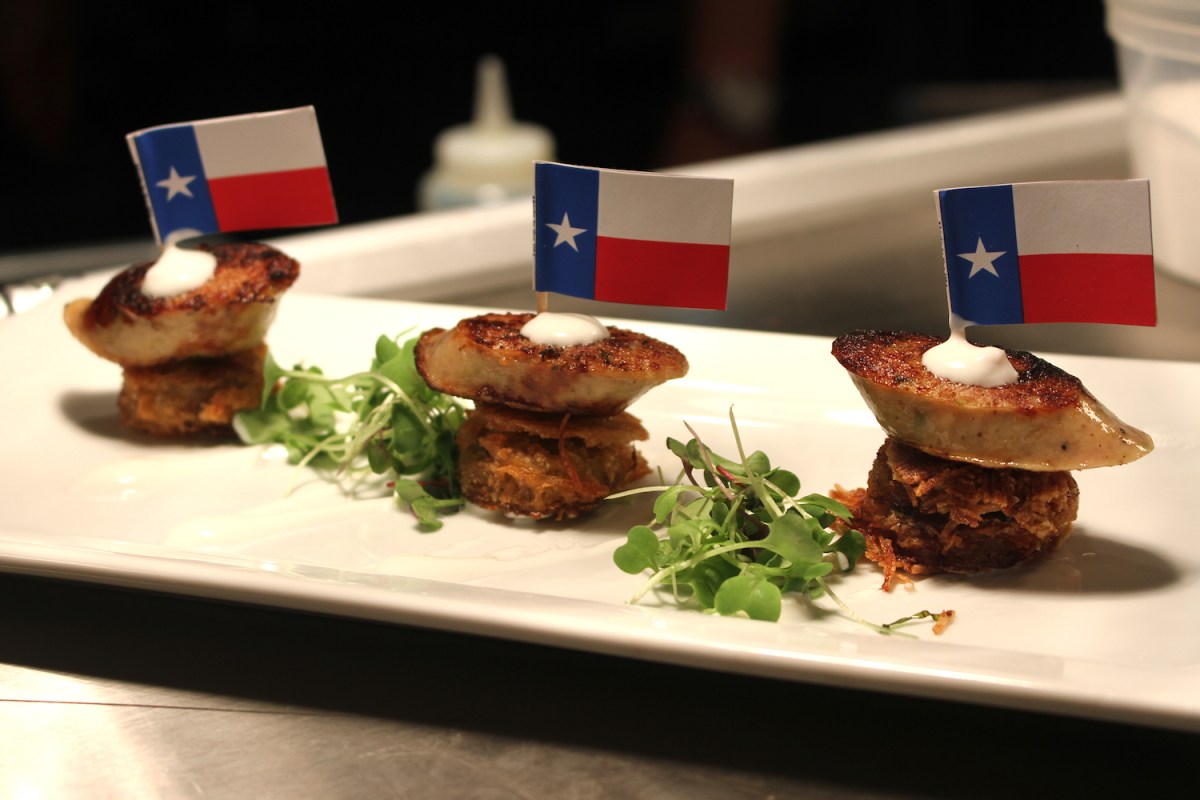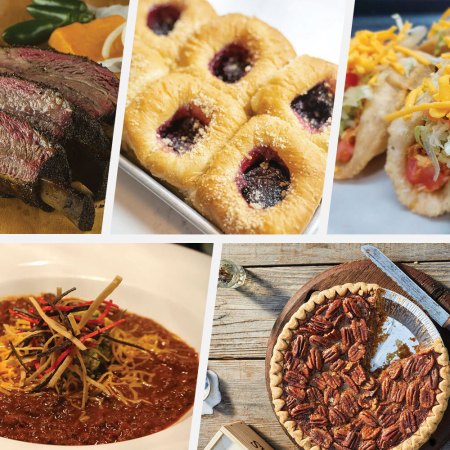If you’ve mastered steaks and burgers, it’s only natural that you’d want to branch out and try cooking something a bit more interesting. And once you’ve tackled quail and goat, you can set your sights on something higher. Or, in this case, lower: that rattlesnake slithering dangerously close to your feet.
On October 6 from 3 to 5 p.m., 12 of Fort Worth’s top chefs will gather in Mule Alley in the Stockyards to compete in the Rattle Battle, a cookoff in which rattlesnake is the only mandatory ingredient on the day’s menu. We’re talking about chefs like Graham Elliot (Le Margot), Blaine Staniford (Grace, 61 Osteria, Little Red Wasp), John Bonnell (Bonnell’s Fine Texas Cuisine), Rodrigo Cárdenas (Don Artemio) and other heavy-hitters. They’ll go head-to-head in a culinary battle, and attendees can watch the action, sample all 12 dishes and vote for their favorite.
The event is hosted by chef Tim Love and inspired by his flagship concept, Lonesome Dove Western Bistro. Open since 2000, Lonesome Dove is known for serving dishes that highlight unique meats, like kangaroo carpaccio, elk ribeye and rabbit-and-rattlesnake sausage. So Love is no stranger to the rattlesnake, and he says it has a unique flavor that is often described as a blend of chicken and fish with a slightly sweet undertone.

Cooking Rattlesnakes in Texas: A History Lesson
Texas proteins don’t start and end with beef. The state has a long history of cooking buffalo, wild hogs, native deer and other meats. That extends to rattlesnakes, which served as a valuable food source for indigenous peoples and early settlers across Texas and the Southwest.
“Native American tribes in Texas, such as the Comanche and Apache, traditionally included rattlesnakes in their diets,” Love tells InsideHook. This practice was adopted by European settlers who began moving into Texas in the 18th and 19th centuries, especially when other food sources were scarce.
Frontier life wasn’t easy for a myriad of reasons, not least of which that settlers had to catch or kill their own food. But Love says that rattlesnakes were readily available and a relatively easy-to-catch protein on the Texas frontier. “The meat was often battered and fried, similar to the way one might prepare fried chicken,” he says.
Over the years, rattlesnake meat gave way to other proteins, but rattlesnake roundups — events dedicated to capturing and cooking snakes — have long been held in various towns across Texas. The Rattle Battle in Fort Worth is an homage to such events, and it will test the mettle of the competing chefs.
Where to Eat in Houston Right Now, According to Its Top Chefs
Heed their pro tips for excellent sushi, tacos, pizza and moreHow to Cook Rattlesnake
First, you’ve got to find one. Love says the most fun way to score a snake is to hunt it yourself, but you can also order one from a specialty meat market like Valley Game. Once secured, it’s important to handle and cook the rattlesnake properly to ensure safety and flavor.
“Always exercise caution when handling rattlesnake meat,” Love says. “Make sure the snake is dead and properly cleaned before you begin cooking. You can purchase pre-skinned and gutted rattlesnake meat for convenience.”
If you’re working with a whole rattlesnake, you’ll need to remove the skin. Love says this can be challenging, so it’s often best to leave this part to a professional butcher or buy pre-skinned rattlesnake meat. Next up, use a sharp knife to filet the meat off the row of small bones down the snake’s back.
Marinating rattlesnake for a few hours before cooking can enhance its flavor and tenderness, and if you want to go this route, Love suggests a simple marinade of olive oil, garlic, herbs and citrus juice. Otherwise, season the meat with a light touch of salt, pepper, garlic and paprika, plus a hint of citrus zest. If you want more spice, add a pinch of cayenne pepper or chili powder to the mix. “Rattlesnake has a mild, slightly sweet flavor that can be easily overwhelmed by strong seasonings,” Love says.
He suggests frying or grilling the snake, as these cooking methods will preserve its unique flavor and texture. Cut the meat into bite-sized pieces or strips, and coat them in your choice of batter or seasoning before throwing them into the fryer or atop the grill. “Aim for a crispy exterior while keeping the inside tender,” he says. You can also sauté rattlesnake meat in a skillet with a bit of oil or butter, but in this case, he says to keep the pieces small and cook them quickly. “Remember that rattlesnake meat is lean and can become tough if overcooked, so keep an eye on the cooking time and avoid high heat for extended periods.”
All that’s left to do now is serve your rattlesnake. Love likes to put it on a platter with garnishes like fresh herbs, lemon wedges and a dipping sauce or aioli. As for side dishes, he says that rattlesnake pairs well with coleslaw, grilled vegetables and simple salads to balance the flavors.
Cook up a rattlesnake at home for your next dinner party or bring it over to a friend’s house on game day, and you can rest assured that you won’t be repeating a dish with any other attendees.
Every Thursday, our resident experts see to it that you’re up to date on the latest from the world of drinks. Trend reports, bottle reviews, cocktail recipes and more. Sign up for THE SPILL now.

























